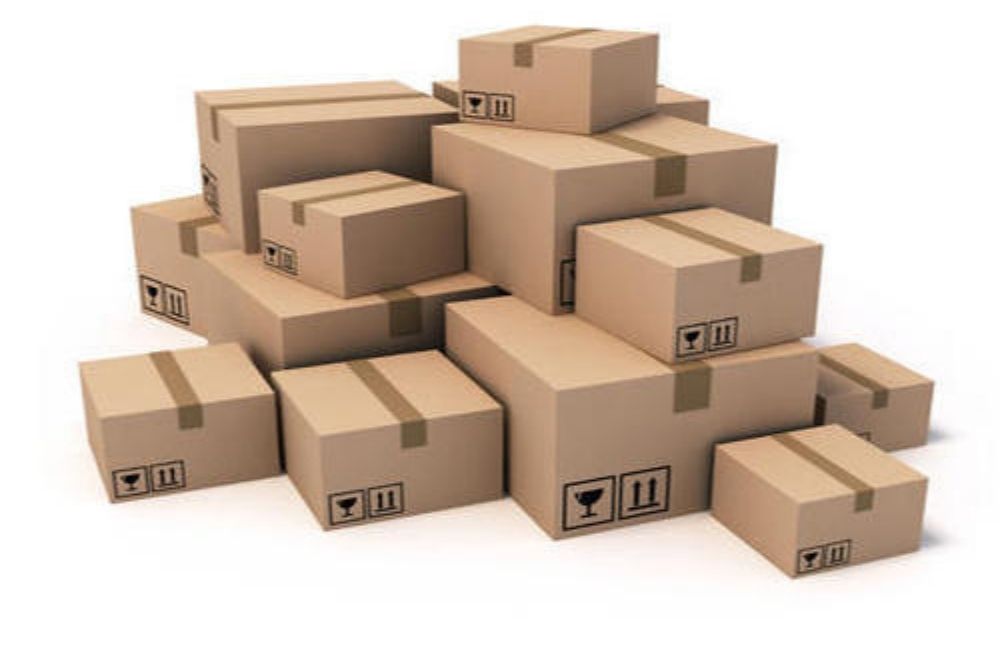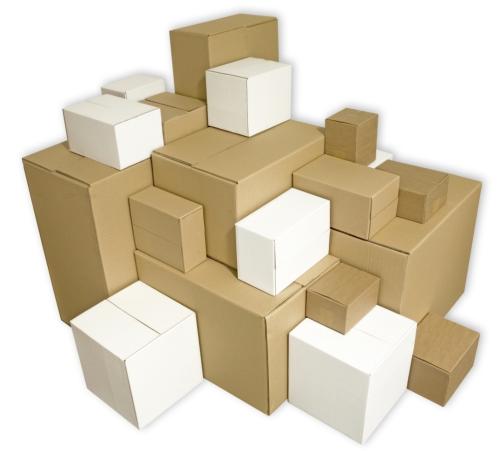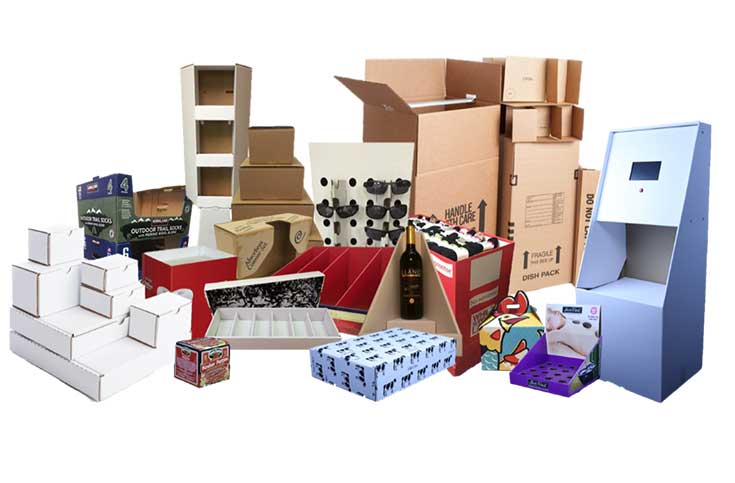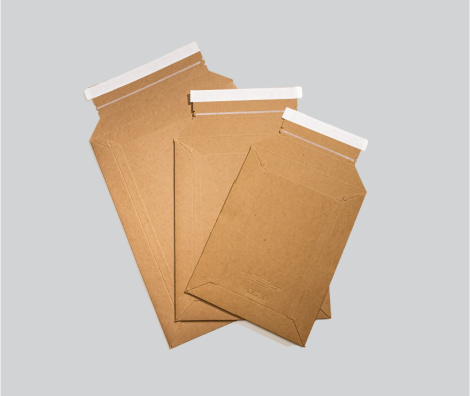“Corrugated box manufacturing is a vital industry that provides durable, eco-friendly packaging solutions for various sectors, including e-commerce, retail, and agriculture.

Corrugated Box Manufacturing , box manufacturer near me .
Corrugated boxes (also known as cardboard boxes) are an essential part of the global packaging industry. These boxes are lightweight, durable and economical, making them ideal for transporting, storing and protecting products. Their wide application covers industries such as e-commerce, food and beverage, pharmaceuticals, and manufacturing. brown paper box .With an increasing focus on sustainable and environmentally friendly packaging solutions, the corrugated box industry is experiencing significant progress and expansion. This paper examines the intricacies of corrugated box manufacturing – from raw material to final product – and examines industry challenges, trends and opportunities.
Raw Materials and Components
The primary raw material used in the manufacture of corrugated boxes is paper made from wood pulp, recycled materials, or a combination of both. The three main components of a corrugated box are linerboard, fluting media, and adhesives. Liner boards: these are the flat layers that form the external and interior surfaces of the box. They are generally made from Kraft paper, which offers high resistance and sustainability. Corrugated: This is the corrugated layer between the cover panels that gives the box rigidity and shock absorption.
Adhesive: A starch-based adhesive is typically used to bond the exterior panels and splines together to ensure the structural integrity of the box. The choice of raw materials is very important as it directly affects the strength, weight and durability of the box. brown paper box .
brown paper box

Manufacturing Process
There are several key steps in making corrugated boxes, each of which requires specialized equipment and experience. The process can be broadly divided into the following stages:
Pulp and paper production: Wood or recycled paper is processed to produce kraft paper and flutes. This step is aimed at achieving the desired thickness, weight and strength of the paper.
Ripple: The corrugated material is passed through heated rollers to create a wavy pattern. Next, glue to the liner board to form a single, double, triple waveform sheet according to the required power.
Cutting and printing sheets: Large waveform sheets are allowed for certain sizes and shapes. Flexographic printing is commonly used to add branding, product information, and handling instructions.
Box Formation: The cut and printed sheets are folded, glued, or stitched to form boxes. Automated equipment ensures precision and efficiency at this stage.
Quality Control: Each box undergoes rigorous testing to ensure it meets industry standards for strength, moisture resistance and dimensional accuracy.
Industry Trends and Innovations
The corrugated industry is rapidly evolving due to technological advancements and changing consumer preferences. Key trends include:
Sustainability: Manufacturers are prioritizing the use of recycled materials and eco-friendly adhesives to reduce their impact on the environment. Digital Printing: Advanced printing technologies enable high-quality graphics and personalized designs, enhancing brand visibility.
Lightweight Solutions: Efforts are underway to produce lighter yet stronger boxes to minimize shipping costs and carbon emissions. Smart packaging: Integration of QR codes, RFID tugs and sensors adds value to corrugated boxes, facilitating the transparency of the supply chain and tracking the product. brown paper box .
Challenges in the Industry
Despite its growth, the corrugated box manufacturing industry faces several challenges:
Raw Material Costs: Fluctuations in the prices of paper and adhesives can impact profitability.
Environmental Regulations: Adhering to stringent sustainability standards requires significant investment in technology and processes. Competition: The market is highly competitive, with many players vying for market share. box manufacturer near me.
Logistics and supply chain: Corrugated boxes are bulky, creating logistical challenges for efficient transportation and storage. box manufacturer near me .
Opportunities for Growth
The growth of e-commerce and increasing demand for eco-friendly packaging solutions are creating huge opportunities for the corrugated industry. box manufacturer near me .Collaboration with retail giants, design innovations, and expansion into emerging markets are some of the potential growth avenues. Additionally, government initiatives promoting recycling and green packaging further boost the industry\’s prospects.
The corrugated box industry plays a vital role in the global economy as the backbone of logistics and supply chain management. Made from corrugated board, these boxes are widely used in industries such as e-commerce, retail, agriculture, food & beverage, pharmaceutical, and manufacturing. Its unique combination of strength, flexibility, and cost-effectiveness has made corrugated cardboard an essential part of packaging and transportation. box manufacturer near me . This comprehensive analysis explores the history, production process, market trends, challenges, and future outlook for the corrugated cardboard box industry.
Historical Context
The origin of the waveform box was first used as a packaging material for fragile products until the mid -19th century. Initially, the waveform paper was patented to lay out a high hat in 1856, but the possibility was immediately recognized as a packaging material. The first patent for a single-wall corrugated box was issued in the 1870s, marking the beginning of its commercial use. Decades of advances in manufacturing techniques and material science have made the corrugated box a versatile and essential packaging solution. box manufacturer near me .
Raw Materials and Design
Corrugated boxes are made primarily from paper materials, including kraft paper and recycled paper. The main components of a corrugated box are: box manufacturer near me .
Linerboard: Flat layers that form the outer and inner surfaces of a box. Liner boards are typically made from pure kraft pulp, which offers high tensile strength.
Corrugated Midliner: An arched layer placed between the backing boards to provide rigidity and shock absorption. Fluting is made from semi-chemical or recycled pulp.
Adhesives: Starch-based glues are widely used to bond the linerboards and fluting medium. The thickness and configuration of these components determine the strength and durability of the box, with variations such as single-wall, double-wall and triple-wall designs to accommodate a variety of packaging requirements.
The production of wavy boxes contains a series of complex steps.
Pulp preparation: Processing wood chips or converted paper to create a pulp and dried it with a large handicraft roll.
Hezekiah: The fruiter media rises warmly, passes through the undulations, and gets a characteristic wave -shaped structure. This corrugated board is glued between two pieces of linerboard to form a corrugated sheet.

Cutting and Forming: box manufacturer near me .The corrugated sheet is cut into the desired size and shape using a die-cut or rotary die-cut machine. Printing: The box is printed with the brand name, product information or instructions. Flexography is the most commonly used technology.
Assembly: The printed and cut sheets are folded, glued, and sometimes stitched to form complete boxes.
Quality Control: Each box undergoes rigorous testing for strength, moisture resistance, and dimensional accuracy before reaching the market.
Corrugated boxes are versatile, making them suitable for a wide range of applications.
E-commerce packaging: With the rise of online shopping, the lightweight and protective properties of corrugated boxes have made them the preferred choice for shipping products.
Food and beverage: Corrugated boxes are used to transport fresh foods, beverages, and frozen goods, and often have a food-grade coating. Pharmaceuticals: These boxes provide a sterile and safe environment for transporting medical supplies and medications.
Industrial: Durable corrugated boxes are designed to transport large and fragile items such as machine parts and electronic devices.
white paper box
Industry Hormies indicate several transformative trends:
Sustainability: increased awareness of environmental problems has led to evolution towards treatment and biodegradable materials. Corrugated Box Manufacturing . Many manufacturers accept treatment systems with a closed circuit. Digital printing: advanced digital printing technologies allow high resolution graphics and personalized packaging, improving brand visibility and customer engagement.
Slight conceptions: efforts to reduce the use of materials without compromising the force have led to lighter boxes, a reduction in shipping costs and an environmental impact. Corrugated Box Manufacturing .Smart Packaging: Integration of QR codes, RFID tags, and IoT-enabled sensors provides enhanced functionality and allows real-time product tracking and authentication.
Despite the growth, the corrugated industry faces many challenges.
Raw material costs: Fluctuations in paper prices due to demand-supply imbalances and deforestation issues can affect profitability. Corrugated Box Manufacturing .
Environmental regulations: Stricter laws on waste management and carbon emissions require significant investments in sustainable practices. Competition: The market is highly fragmented, with SMEs competing with large enterprises. Corrugated Box Manufacturing .
Logistical Challenges: The bulk of corrugated boxes creates transportation and storage issues, increasing costs.
The corrugated box industry is the foundation of modern commerce, enabling goods to be transported safely and efficiently around the world. Its adaptability, cost-effectiveness and environmental benefits make it the preferred choice for businesses and consumers. With sustainability, innovation and technology in mind, the industry is well prepared to meet the challenges and opportunities of the emerging market. As the demand for reliable and sustainable packaging solutions increases, the corrugated box industry will remain a significant player in global trade and logistics.
The corrugated cardboard box industry is the cornerstone of the global packaging sector and is characterized by its adaptability, durability and wide range of uses. As the most versatile packaging solution, corrugated cardboard boxes have revolutionized the way goods are transported and stored. The material’s combination of light weight, strength and environmental friendliness has made it an indispensable part of e-commerce, retail, pharmaceuticals, agriculture, manufacturing, etc. Corrugated Box Manufacturing .This in-depth study focuses on the key aspects of the industry, its achievements, and the challenges it faces in a rapidly changing market. Advanced production methods
The production of wavy boxes has undergone significant achievements, due to the need for efficiency and environmental stability. Corrugated Box Manufacturing .The production process begins with the preparation of raw materials, mainly handcrafted goats and redesigned fibers. The latest mechanism is used to convert these materials to waveform sheets through processes that include waveform rollers, adhesive use, and accurate cutting.
Waving process: The high -speed waveform is fixed between the platforms for the formation of a waveform sheet to the formation of a flat paper. Corrugated Box Manufacturing . This step gives the box its structural strength and rigidity.
Printing and Personalization: With the advent of digital printing, it is now possible to incorporate intricate designs, branding, and high-quality graphics onto corrugated boxes. This capability enhances marketing potential while maintaining profitability. Corrugated Box Manufacturing .
Automation: Automation of box manufacturing has minimized errors and increased production speed. Computerized machines can produce large volumes of boxes with consistent quality, catering to diverse client requirements. Corrugated Box Manufacturing .
Market Dynamics and Growth Opportunities
The corrugated box market is shaped by a dynamic interplay of factors, including consumer demand, technological advancements, and environmental concerns. With the exponential growth of e-commerce, the demand for sturdy and customizable packaging solutions has skyrocketed. Similarly, the food and beverage industry relies heavily on cardboard boxes for the safe and hygienic transportation of fresh goods.
Commitment to sustainability: The industry is adopting environmentally friendly practices by prioritizing the use of recycled materials and reducing carbon emissions. Closed-loop recycling systems and biodegradable coatings are being developed to address environmental issues. white paper box .
Emerging Economies: Rapid industrialization and urbanization in developing regions offer enormous growth opportunities. The increasing adoption of packaged goods in these areas is driving demand for cost-effective and durable packaging solutions. white paper box .
Technological Integration: Smart packaging solutions, such as boxes embedded with QR codes, RFID tags, and sensors, are adding value by facilitating inventory management and supply chain transparency. These innovations are especially important in sectors such as pharmaceuticals and electronics.
Challenges and Prospects
The corrugated industry is constantly growing, but it is not without challenges. Fluctuating raw material costs, environmental regulations and fierce market competition are forcing manufacturers to continuously innovate and optimize their processes. Corrugated boxes pose logistical challenges due to their bulkiness and require efficient storage and transportation solutions.
Looking ahead, the industry’s trajectory is likely to be shaped by continued advancements in material science and manufacturing technologies. Collaborative efforts among stakeholders—from suppliers and manufacturers to consumers—will be essential in driving sustainable growth. white paper box . As businesses and consumers increasingly prioritize environmentally friendly packaging, the corrugated industry has the potential to become a leader in creating a more sustainable and efficient global supply chain.
The corrugated box industry is a vital segment of the global packaging ecosystem offering unmatched versatility, sustainability and practicality. white paper box . These boxes are the preferred choice for businesses looking for reliable, cost-effective solutions for transporting, storing and protecting their products. Combining lightweight properties with exceptional strength, this material has become an essential component in many sectors including e-commerce, food & beverage, pharmaceutical, agriculture, manufacturing, etc.
As industries prioritize environmentally friendly practices, corrugated boxes made primarily from recycled and biodegradable materials are becoming the cornerstone of sustainable packaging solutions. white paper box .This article provides a detailed study of the corrugated box industry, focusing on historical development, production challenges, market dynamics, challenges and future outlook.
Historical Development and Market Growth
The history of corrugated boxes dates back to the 19th century, when their potential as a packaging material began to be recognized. Originally used to transport glassware and other fragile items, these boxes have evolved over time in terms of design, durability, and functionality. white paper box .The advent of mechanized production in the 20th century revolutionized the industry, allowing for large-scale production and widespread adoption.
In recent years, the corrugated box market has experienced unprecedented growth, driven by a confluence of factors. . white paper box The exponential rise of e-commerce platforms has significantly boosted demand for efficient and protective packaging solutions. Moreover, growing preference for eco-friendly materials among consumers and businesses is resulting in investments in innovative, eco-friendly corrugated products. Emerging economies characterized by rapid industrialization and rising disposable incomes are providing lucrative opportunities for expansion, further accelerating the industry’s upward trajectory. white paper box .
The manufacturing of corrugated boxes involves a series of carefully executed steps that ensure the quality and durability of the product. white paper box . The process begins with the preparation of raw materials, mainly kraft paper and recycled fibers. The cellulose obtained from these materials is processed into thin, durable sheets that form the basis of the corrugated structure.
Corrugating and Rolling: The corrugated media is passed through heated rollers to create the characteristic wavy pattern. This corrugated layer is then glued between two pieces of linerboard using a starch-based adhesive to form a single-ply corrugated sheet. For heavier applications, two- or three-ply configurations are used. white paper box .
Cutting and Shaping: Precision cutting machines and die-cutters are utilized to produce sheets in various sizes and shapes, catering to diverse packaging requirements.
Printing and Customization: Advanced printing technologies, such as flexographic and digital printing, allow for high-resolution graphics, branding, and product-specific details to be incorporated into the boxes. white paper box .
Assembly and Finishing: The cut and printed sheets are folded, glued, or stitched to create the final box structure. Automated assembly lines ensure consistency and efficiency in large-scale production. The selection of materials plays an important role in determining the effects of box resistance, weight, exposure, and environment. white paper box .With the emphasis on stability, it was forced to introduce biodegradable materials treated by manufacturers according to global initiatives to reduce waste and maintain resources.
Corrugated boxes are synonymous with versatility and are used in almost every industry. Their unique ability to provide structural integrity while being lightweight makes them the perfect choice for a wide range of packaging needs.
E-commerce and retail: The explosive growth of online shopping has made corrugated boxes essential for the safe delivery of goods. Custom design and tamper-proof features further enhance their appeal.
Food & Beverage: From fresh produce to frozen foods, corrugated boxes are widely used in the food sector. Coatings and liners provide freshness of the product and compliance with security standards.
Pharmaceuticals and healthcare: sterile, resistant to moisture boxes are crucial for the transportation of sensitive medical equipment and drugs. Agriculture: Heavy-duty corrugated boxes enable the transportation of fruits, vegetables, and other perishable goods.
Market trends indicate a shift toward smart packaging solutions that integrate technology for enhanced functionality. Features such as RFID tags, QR codes and IoT-enabled sensors are becoming increasingly prevalent, enabling real-time tracking, inventory management and authenticity verification.


